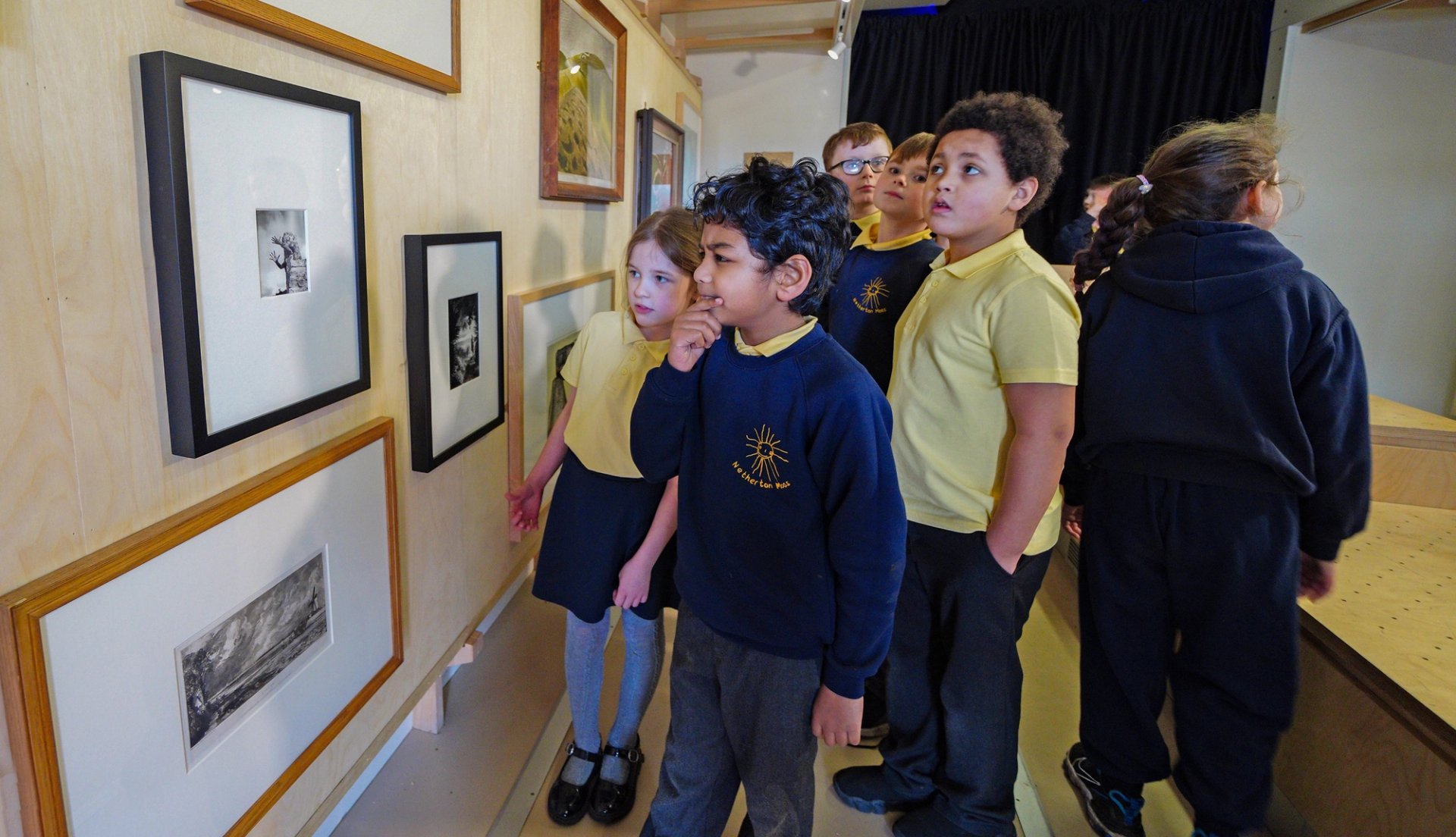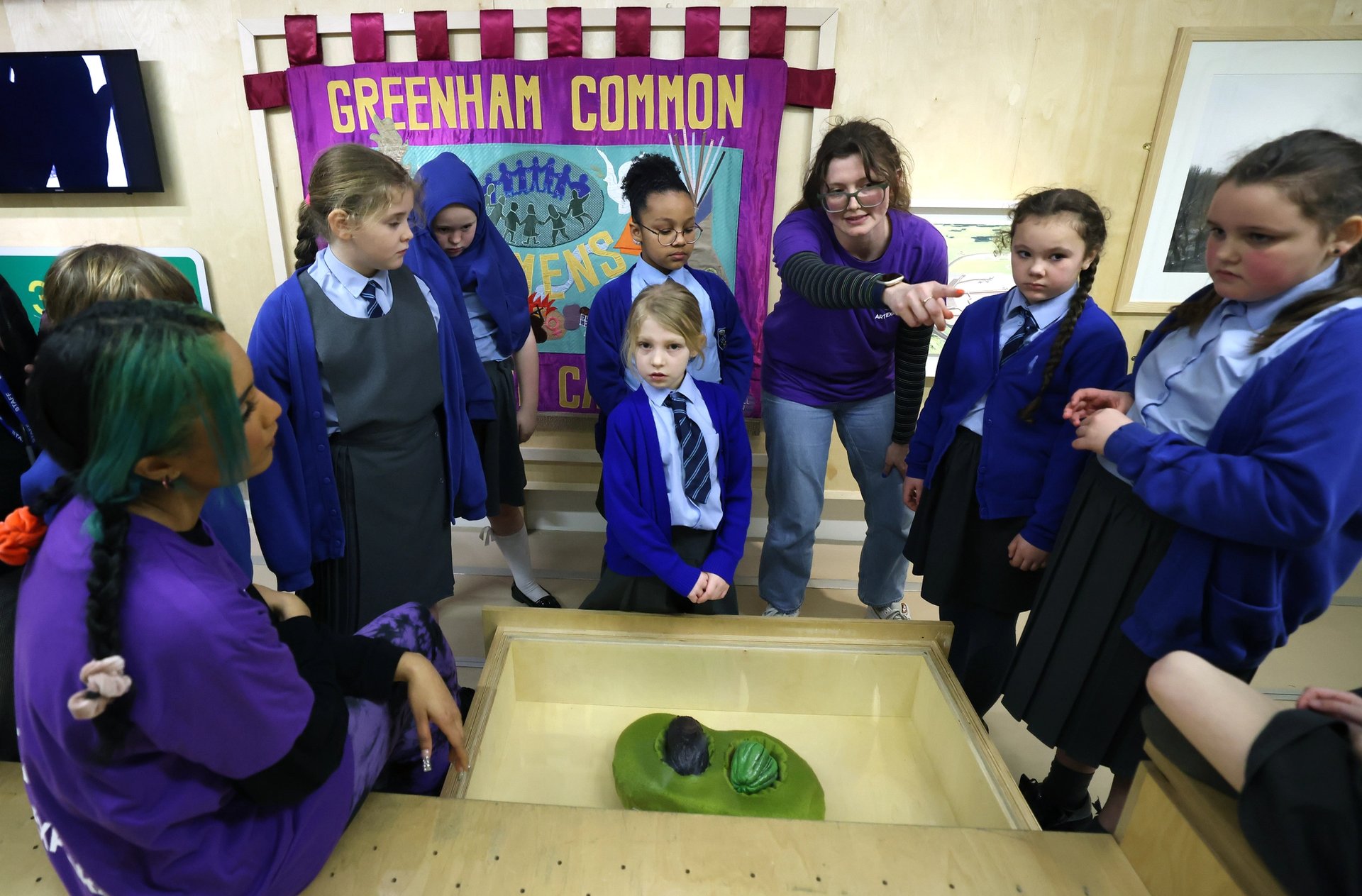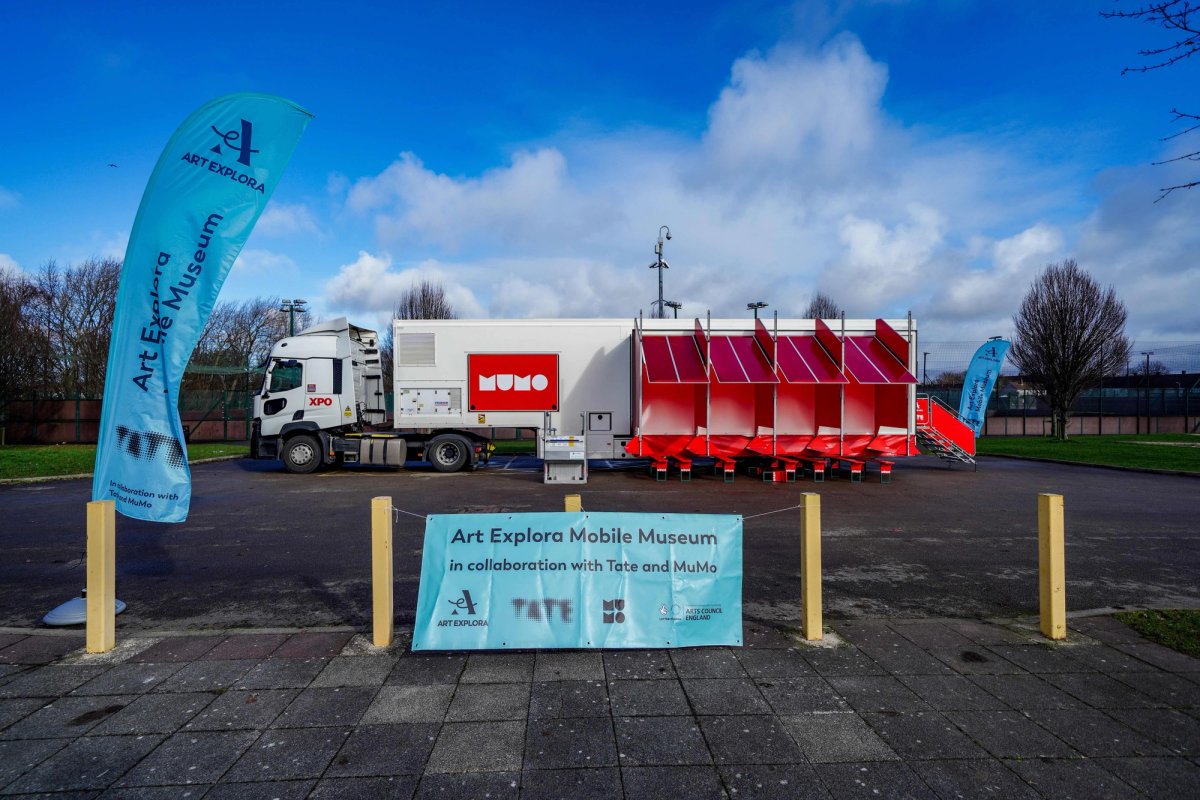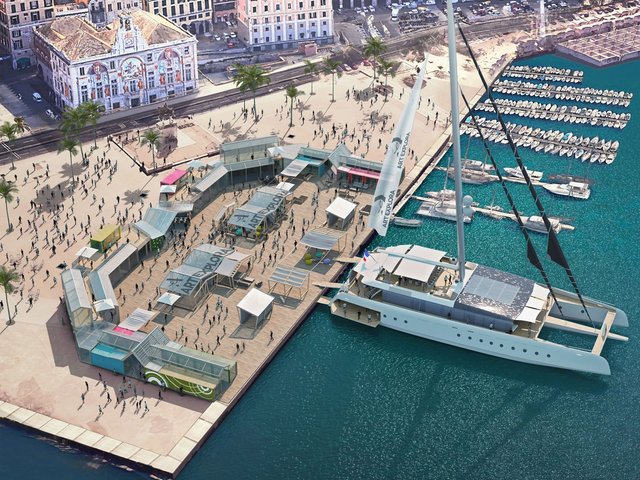For the first time, the Tate is touring works from its national collection directly to the UK's regional communities in a newly conceived "mobile museum".
The Tate has with partnered with the French organisation Art Explora to launch the initiative in the UK. The museum, which is attached to a cargo lorry, will initially take an exhibition on a ten-week tour (until 29 April) across the five boroughs of the Liverpool city region.
The project will act as a pilot scheme for further participatory projects that hope to "arrest issues of attendance at our national museums,” says Helen Legg, the director of Tate Liverpool.
The mobile museum is taking an edited version of Radical Landscapes, an exhibition first shown at the Tate Liverpool in summer 2022, on the road in a bespoke truck which is currently parked in Sefton, Liverpool. The museum will visit locations in St Helens, Knowsley, Wirral, Halton and the centre of Liverpool.

Pupils from Netherton Moss Primary School attend Tate's Mobile Museum © Peter Byrne, PA Wire, courtesy Art Explora/Tate/© matali crasset. ADAGP. All rights reserved. DACS 2023
The exhibition includes pieces by J.M.W. Turner, John Constable, Henry Moore, Barbara Hepworth, John Nash and contemporary artists such as Veronica Ryan and Ingrid Pollard. Primary school children, care home residents and community groups from diverse backgrounds will have the opportunity to view the exhibition and participate in art-making workshops inspired by the works.
At remarks given at the opening of the exhibition, Legg said: “The mobile museum is unique. It goes directly into communities. It allows us, as a museum, to meet people on their own terms.” The project will reach more than 500 school children across Liverpool, Legg added.
On 22 February, a class from Netherton Moss Primary School in Bootle, Liverpool, were the first people to see the mobile museum. Asked why they shouldn’t touch the artworks, one nine-year-old girl said: “Because they're expensive and you don’t want to break them or put fingerprints on them because other people want to see them too.”
The exhibition opens with the 1918 painting The Cornfield by John Nash, the British artist who served in the army in World War One before becoming an official war artist for the UK government. The Cornfield was the first painting Nash made that did not depict the subject of war.
Confronted with painting, a nine-year-old boy said to his classmates: “Maybe, if he was sad, he could have looked at the picture and it would have calmed him down.”

Pupils from Netherton Moss Primary School attend Tate's Mobile Museum © Peter Byrne, PA Wire, courtesy Art Explora/Tate/© matali crasset. ADAGP. All rights reserved. DACS 2023
One classmate remarked that a Tacita Dean photograph titled Majesty (2006) was "a tree that looked like hands". Another interpreted a textile work by Thalia Campbell, titled Greenham Common Women's Peace Camp (1983), as a story about "people that wanted some more money for their work".
“We wanted to go to people's houses, go to where they live and knock on their doors,” says Frédéric Jousset, the founder of Art Explora, in an interview with The Art Newspaper. “That’s the essence of our work.” The Mobile Museum is a non-profit project supported by Art Explora with public funding from the National Lottery through Arts Council England.
The British artist Peter Kennard, whose work is included in the Radical Landscapes exhibition, was present at the launch of the museum in Sefton and joined the schoolchildren in an art-making workshop. “That was very moving,” Jousset said. “We don’t want to create a passive exhibition. We want children to become artists themselves. So, to encounter someone like Peter Kennard, to work with him, get advice from him and have an exchange; that’s a powerful thing.”
Art Explora is currently developing a partnership with the British Museum in London which, Jousset says, will enable “hundreds of thousands of schoolchildren from across Britain” to access the museum’s collection without the barriers of travel or accommodation costs.




